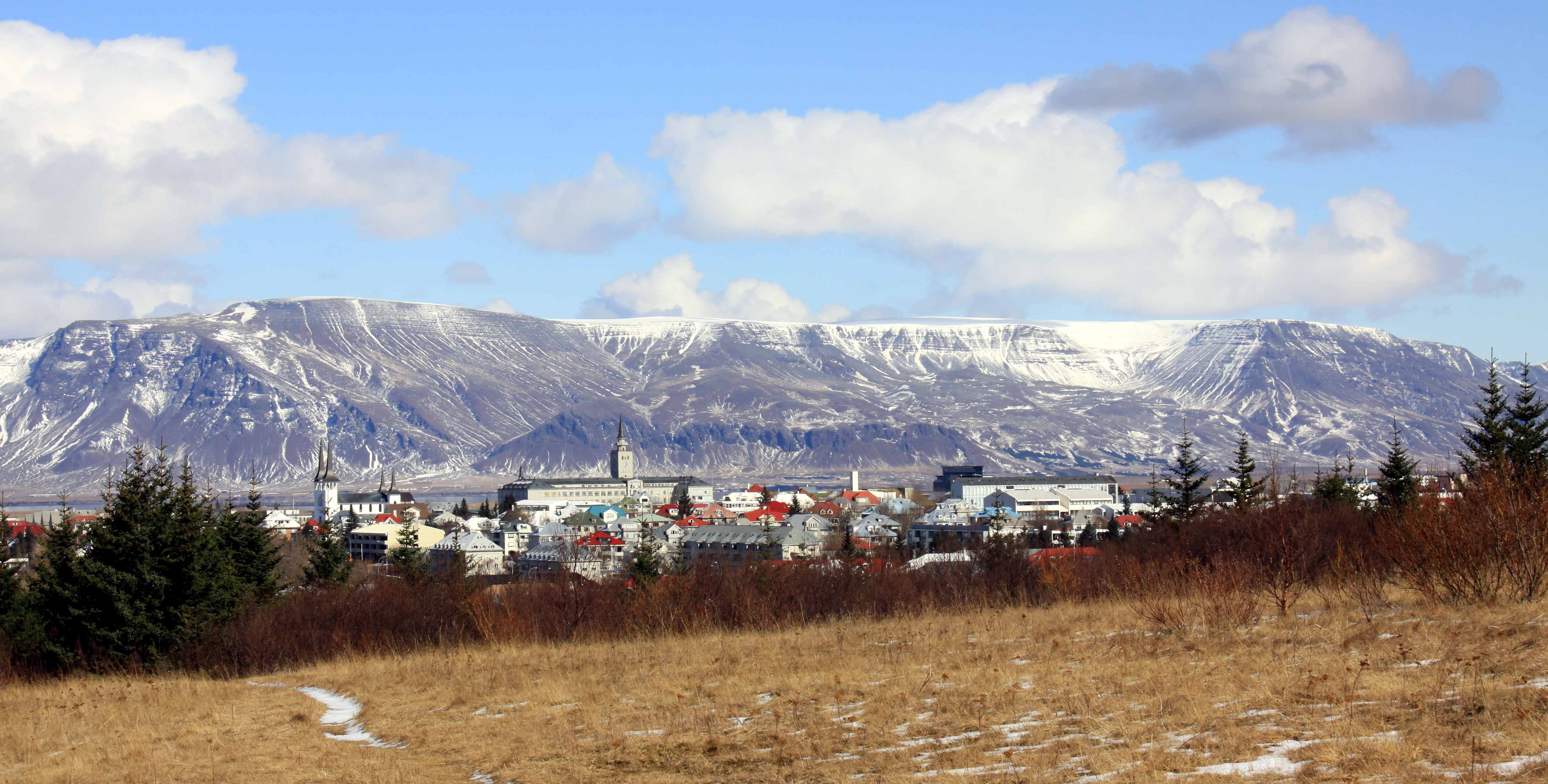Esja Peak on:
[Wikipedia]
[Google]
[Amazon]
Esja, in Icelandic called Esjan, which means "the Esja" (), is a mountain situated in the south-west of Iceland, about ten kilometres north of Iceland's capital city Reykjavík.
Esja is not a single mountain, but a volcanic mountain range, made from basalt and tuff.


Vísindavefurinn, 9 December 2008 (in Icelandic)
Ferlir.is (in Icelandic) After approximately 6.6 kilometers of walking and 597 meters altitude gain is a big rock called Steinn . It is here that most inexperienced climbers choose to go down again, as the path becomes increasingly difficult from there. The highest point, at 914 m, is called Hábunga . From Þverfellshorn, reaching Hábunga requires another three-kilometer trek northeast, across a rocky plateau with no directional signs or clear path. As of August 2011, Hábunga was marked only by a largeMan died in avalanche
Rúv.is

Etymology
The name is likely related to an archaic word, , meaning rock flake or carving stone. In the ''Kjalnesinga saga
Kjalnesinga saga () is one of the sagas of Icelanders (''Islandinga Sögur)''. It is preserved in a parchment manuscripAM 471 4to
The work concerns historical ages from the ninth to eleventh centuries, and was composed in the fourteenth century, a ...
'', there is a rich widow among Irish settlers named Esja, but it is likely that the woman's name is derived from the mountain and not vice versa.
''Esja'' can be used as a given name in Iceland.
Formation
Esja was built up at the end of the Pleistocene with the beginning of the Ice Age. During the warm periods lava flowed, and in the cold periods ridges of tuff were built up under the glacier. The western part of the mountain range is the oldest (about 3.2 million years) and the eastern part is the youngest (about 1.8 million years). The movements of the plate boundaries cutting diagonally through Iceland are continually pushing thestrata
In geology and related fields, a stratum ( : strata) is a layer of rock or sediment characterized by certain lithologic properties or attributes that distinguish it from adjacent layers from which it is separated by visible surfaces known as ei ...
to the west and away from the active volcanic zone.Hvernig myndaðist Esjan?Vísindavefurinn, 9 December 2008 (in Icelandic)
Intrusion
In geology, an igneous intrusion (or intrusive body or simply intrusion) is a body of intrusive igneous rock that forms by crystallization of magma slowly cooling below the surface of the Earth. Intrusions have a wide variety of forms and com ...
s, i.e. large magma channels coming from the old central volcanoes at Kjalarnes
Kjalarnes () is the least populous district in the municipality of Reykjavík, the capital of Iceland, with a population of around 600 inhabitants.
Overview
Kjalarnes was an independent municipality, until it joined Reykjavík in 1998. It takes a ...
and Stardalur , found entrances into the strata. The result was a series of large lava fields, one above the other, which the Ice Age glacier ground down. It left only the highest summits, like the mountain ranges of Esja or Akrafjall .
Physical features
The easternmost summits of the mountain range, called Móskarðshnúkar , are of an unusually light colour. An Icelandic writer in the 19th century, so goes the story, hoped to see the sun there after a long period of rain. But when he looked closer, it was only the mountaintops with their colours. In reality, it is therhyolite
Rhyolite ( ) is the most silica-rich of volcanic rocks. It is generally glassy or fine-grained (aphanitic) in texture, but may be porphyritic, containing larger mineral crystals (phenocrysts) in an otherwise fine-grained groundmass. The mineral ...
stone, often to be found in Icelandic nature near old (and also active) central volcanoes.
Hiking and climbing
Within easy reach of the capital, Esja is a very popular recreation area for hikers and climbers. The best known hiking paths lead to the summits Þverfellshorn (780 m) and Kerhólakambur (851 m). Þverfellshorn is also easily accessible by public transport. The path is divided into sections, marked with signs along the way. Each sign gives an indication of the difficulty of the path ahead with a grade system ranging from 1 boot (easy) to 3 boots (challenging). At the third sign experienced climbers can choose to climb directly to the peak, instead of following the path which goes off to the right.Esjan - leiðir og sagaFerlir.is (in Icelandic) After approximately 6.6 kilometers of walking and 597 meters altitude gain is a big rock called Steinn . It is here that most inexperienced climbers choose to go down again, as the path becomes increasingly difficult from there. The highest point, at 914 m, is called Hábunga . From Þverfellshorn, reaching Hábunga requires another three-kilometer trek northeast, across a rocky plateau with no directional signs or clear path. As of August 2011, Hábunga was marked only by a large
cairn
A cairn is a man-made pile (or stack) of stones raised for a purpose, usually as a marker or as a burial mound. The word ''cairn'' comes from the gd, càrn (plural ).
Cairns have been and are used for a broad variety of purposes. In prehis ...
with a wooden stick at the top.
There is danger of avalanches in wintertime. The last fatality was in 2020.Rúv.is
References
{{Authority control Mountains of Iceland Volcanoes of Iceland Pliocene volcanoes Pleistocene volcanoes